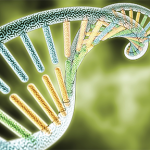Then something shifted. While pursuing his doctorate in medical and physiological chemistry, Dr. Klareskog was exposed by his mentor, P.A. Peterson, to “the fascinating molecular and biological problem” of explicating the functions of transplantation antigens. “It became apparent that these molecules had a major influence on immune response, so I was struck by that very basic problem of how the transplantation antigens worked,” he now recalls.
Then he and his colleagues discovered that Langerhans cells in the skin take up and process microbial antigens to become fully antigen-presenting cells.3 At that point, the descriptive research on Langerhans cells was more than 100 years old (skin Langerhans cells were originally misidentified as nerve cells), although their function had not, at that point, been well understood. “I had a little deposit [of the cells] in my hand, and I could then understand the hundred years of research a bit better,” Dr. Klareskog recalls. “That was an absolutely fascinating moment.”
Other Links
During his first postdoctoral program, Dr. Klareskog concentrated on skin immunology with Langerhans cells. But then another shift occurred: He collaborated with a group of surgeons who had obtained biopsies from patients with inflammatory joints. In his lab, he discovered in samples from joint biopsies cells similar to the Langerhans cells he had found in skin tissue. He began to explore how T cells and MHC class II antigens in the joint interact. At this point, he recalls, “It was obvious to postulate the molecular mechanisms behind the immune reactions of RA, the genetics of which had recently been described. So the knowledge gained from transplantation antigens supplied the molecular part of the story.”2
Why did Dr. Klareskog move from skin immunology to rheumatic disease? “I thought the disease was extremely undervalued, and it was a bit of challenge,” he now says of this line of research. “In a way, it was returning to my interest in public health thinking.”
He handed over the skin research to one of his first PhD students and launched into a pursuit of the mechanisms of RA. He obtained grant funding from the Swedish Medical Research Council and brought his research project to Hans Wigzell’s immunology lab at Uppsala University. Dr. Wigzell, who later became Karolinska president, encouraged Dr. Klareskog to set up his arthritis group in the immunology lab.
As he advanced up the academic ladder at Uppsala University, Dr. Klareskog also expanded his research directions. In concert with Rikard Holmdahl, he worked on characterizing a collagen arthritis model in rodents. Tracing the molecular pathways of disease stimulation in mice, they reasoned, could elucidate the types of immune reactions to environmental stimuli in humans.
